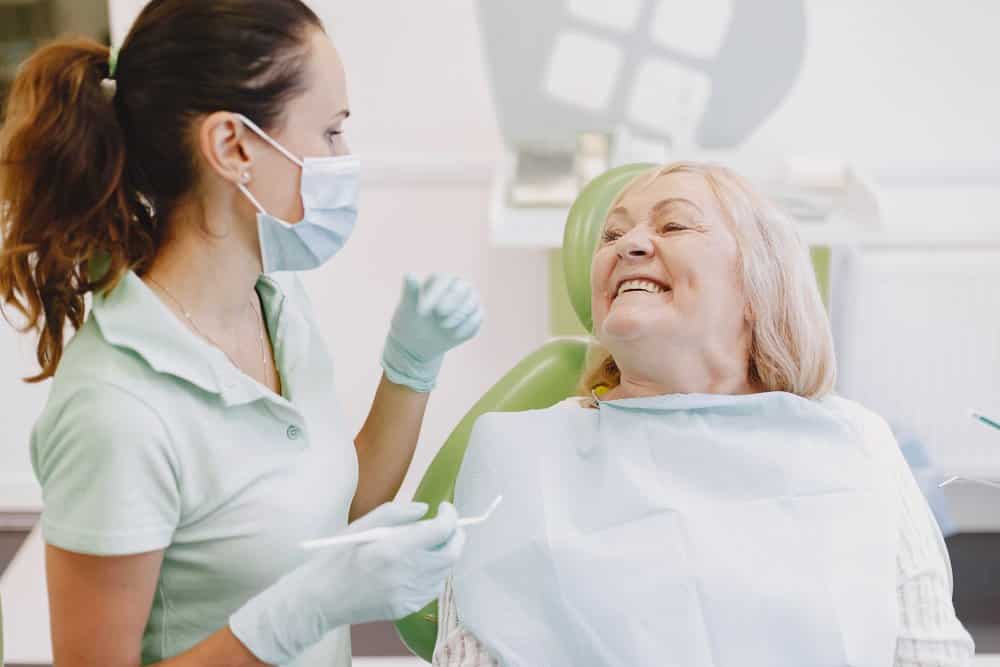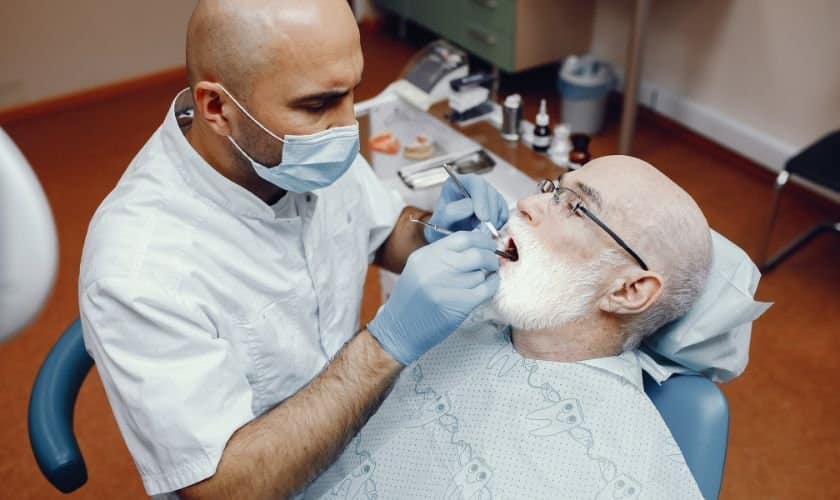
Welcome to our comprehensive guide on essential tips for optimal periodontal care! Taking good care of your teeth and gums is crucial for maintaining a healthy mouth, preventing tooth loss, and avoiding serious health complications. Periodontal disease affects millions of people worldwide, but with the right knowledge and habits, you can keep your teeth and gums in top shape. In this article, we’ll explore the importance of periodontal cleaning, the different types of cleaning methods available to you, how often you should clean your teeth, what foods cause gingivitis, and how to treat gingivitis if it happens. So let’s dive in!
The Importance of Periodontal Cleaning
Periodontal cleaning, also known as scaling and root planing, is a critical part of maintaining optimal oral health. Regular brushing and flossing can remove plaque from the surface of your teeth, but it’s not enough to prevent gum disease. Plaque buildup below the gum line can cause inflammation and infection in your gums.
If left untreated, gum disease can lead to tooth loss and even systemic health problems like heart disease and diabetes. Periodontal cleaning removes plaque and tartar from above and below the gum line using special instruments that reach deep into the pockets around your teeth.
This procedure helps reduce inflammation in your gums, allowing them to heal properly. Your dentist or hygienist may recommend periodontal cleaning if they notice signs of gum disease during an exam or cleaning appointment.
It’s important to keep up with regular dental cleanings every six months to prevent serious issues from developing. Your oral health affects more than just your mouth- so take care of it!
The Types of Periodontal Cleaning Methods
When it comes to periodontal cleaning, there are a few different methods that your dentist or dental hygienist can use. The type of cleaning method used will depend on the severity of your gum disease and what stage you’re at.
The first type of periodontal cleaning is called scaling and root planing. This is a deep-cleaning procedure that involves removing plaque and tartar from below the gum line. Your dentist or dental hygienist will use special tools to scrape away any buildup on your teeth and roots, smoothing out any rough areas where bacteria may be hiding.
Another type of periodontal cleaning is laser therapy. This treatment uses high-powered lasers to target and destroy bacteria in the pockets between your teeth and gums. It’s a minimally invasive option that doesn’t require anesthesia or incisions.
In some cases, antibiotics may also be prescribed to help treat gum disease. These medications can come in various forms, including pills, mouthwash, gels, or creams.
It’s important to remember that regular cleanings with your dentist or dental hygienist are crucial for maintaining good oral health. If you suspect you have gum disease or haven’t had a cleaning in over six months, schedule an appointment today!
How Often Should You Clean Your Teeth?
Maintaining good oral hygiene is essential for healthy gums and teeth. One of the most important aspects of dental care is regular brushing, flossing, and cleaning to keep bacteria at bay.
So how often should you clean your teeth? The answer varies depending on a number of factors such as age, overall health, and lifestyle habits. Generally speaking, it is recommended that you brush your teeth twice daily or after meals with fluoride toothpaste.
In addition to brushing, regular flossing can help remove food particles from between the teeth and minimize plaque buildup. Dental professionals recommend flossing once per day before bedtime.
Regular dental checkups are also crucial in maintaining optimal periodontal health. During these visits, dentists can perform thorough cleanings using specialized tools designed to reach areas that may be difficult to access during standard brushing or flossing routines.
In some cases where gum disease has already set in or there are other underlying medical conditions present, more frequent cleanings may be necessary. It’s always best to consult with your dentist about what frequency would work best for you based on your individual needs.
What Foods Cause Gingivitis?
Maintaining good oral hygiene is essential to prevent gum disease, and the food you eat plays a significant role in keeping your gums healthy. Some foods can promote the growth of bacteria in your mouth, leading to gingivitis.
Sugary and starchy foods are particularly harmful as they provide an environment for bacteria to thrive. These include candy, soda, cookies, cakes, chips, and crackers. When these types of food particles get stuck between teeth or along the gumline, it can lead to plaque buildup.
Acidic fruits like lemons and oranges can also contribute to gingivitis. They erode the enamel on teeth over time while increasing acid levels in the mouth which promotes bacterial growth.
Alcohol is another culprit that people often overlook when it comes to its effects on oral health. Drinking too much alcohol dries out your mouth reducing saliva production which neutralizes acids caused by dental plaque.
By avoiding or limiting sugary/starchy foods and acidic drinks such as soda/alcohol/energy drinks/juices- you’ll be doing yourself a favor by promoting better oral health!
How to Treat Gingivitis
Gingivitis is a common periodontal disease caused by the buildup of plaque on teeth. If left untreated, it can lead to tooth decay and even tooth loss. Luckily, there are several ways to treat gingivitis.
The first step in treating gingivitis is improving oral hygiene habits. This includes brushing twice daily with fluoride toothpaste, flossing at least once per day, and using mouthwash regularly.
In addition to regular brushing and flossing, your dentist may recommend a professional dental cleaning to remove any built-up plaque or tartar that cannot be reached with a toothbrush or floss alone.
For more severe cases of gingivitis, your dentist may prescribe antibiotics or other medications to reduce inflammation and fight off infection.
It’s important to note that while these treatments can help reverse the effects of gingivitis, proper oral hygiene must be maintained long-term in order to prevent it from returning.
If you suspect you have gingivitis or are experiencing symptoms such as swollen gums or bleeding when brushing/flossing, schedule an appointment with your dentist as soon as possible. Together you can create a treatment plan tailored specifically for you.
Conclusion
Maintaining optimal periodontal health is crucial for overall well-being. By following the tips outlined in this comprehensive guide, you can keep your teeth and gums healthy and prevent the development of gingivitis and other serious dental conditions.
Regular brushing, flossing, and professional cleanings are essential components of a good oral hygiene routine. Additionally, avoiding sugary foods, drinking plenty of water, and eating a balanced diet rich in vitamins and minerals can help to reduce inflammation in the gums.
If you notice any signs of gingivitis or other gum diseases such as bleeding gums or persistent bad breath, it’s important to seek treatment from a qualified dental professional right away. With proper care and regular checkups with your dentist, you can maintain excellent periodontal health for years to come!
FAQs
How long does periodontal treatment take to heal?
Typically, recovery takes one to two weeks, but it may take longer. periodontal grafting has a high rate of success and can reduce the risk of developing severe periodontal disease.
How often should you do periodontal maintenance?
After your periodontal treatment has been completed, your dentist and dental hygienist will advise you to undergo regular maintenance cleanings (periodontal cleanings), typically four times per year. During these appointments, the pocket depths will be thoroughly examined to ensure their health.
Is it possible to cure periodontal disease?
Yes, periodontal disease is highly treatable, and the earlier it is detected, the greater the likelihood of successful treatment.





